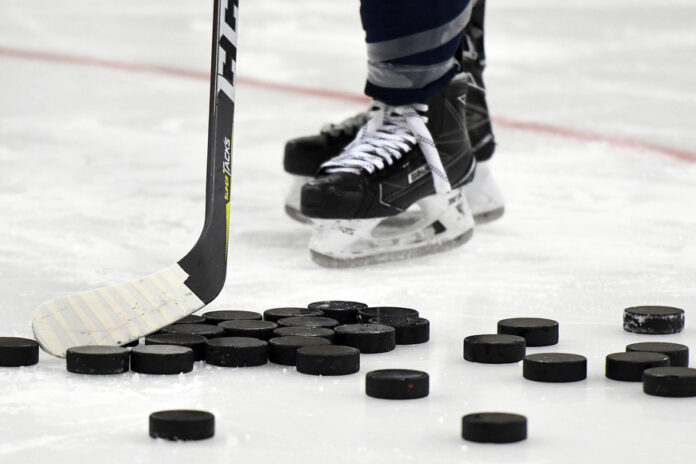The 2019 Canada Games provided an interesting laboratory for hockey. Led by Joshua Roy, Olivier Nadeau and Justin Robidas, among others, the Quebec team walked away with the gold medal, thanks to a victory against Ontario in the final.
“I didn’t feel bullying was part of the game, that provinces were trying to bully us. And our players were fast, efficient with their stick,” recalls Frédéric Lavoie, associate coach of Quebec that year.
What’s special about this team? It was the first cohort that had developed with the so-called progressive check rule. In other words, these players, who were then 15 years old, were playing their first season with body checking, and therefore faced opponents who had more years of experience with shoulder hits. And it didn’t show.
Full body checking is the latest of any province to be introduced in Quebec. Now a University of Ottawa professor is asking Hockey Canada to change its rules and raise the age of bodychecking to 15. If his proposal is accepted, full body checking would therefore be introduced at the same age everywhere in Canada.
The professor in question is Kristian Goulet, of the Faculty of Medicine at the University of Ottawa and the Children’s Hospital of Eastern Ontario (CHEO).
“When I started working on the subject in 2012, the general mentality was that the younger the players are when they are introduced to checking, the more they will learn to give and protect themselves when they receive one. “, explains Mr. Goulet.
Mr. Goulet points out that the changes made over the years at the lower levels now provide enough data to quantify the effect of the bodychecking ban. In 2013, Hockey Canada banned body checking at the pee-wee level, or U13 today. Citing a study from the British Journal of Sports Medicine, Goulet said the number of injuries fell by 50% and the number of concussions by 64% after the new rules were implemented.
“Some say our proposal would only push the problem to a later age. But we’ve looked into it, and there’s not a big increase in injury from introducing bodychecking at a later age, says Goulet.
“Go to a high school class, and you’re going to see big variations in the physical maturity of the kids, around 50 or 60 lbs. Putting these young people on the same rink, allowing checks, is not a good idea. Pushing it back to 15, they are more physically mature. »
In the University of Ottawa press release announcing the study, Professor Kristian Goulet urges Hockey Canada to change its rules “to raise the age of legal body checking from 13 to 15 years old”.
“I was told: ‘Come back to us when the study is completed and we will take stock.’ I have since sent two emails to initiate a discussion. I don’t know if I’m writing to the wrong address, but I haven’t received any response,” he laments.
Late Wednesday, Hockey Canada responded to the study. In an emailed statement, the body says it “appreciates and welcomes” Mr. Goulet’s “important” work, while committing to making hockey “safer” through Dr. Mark Aubry, a “leader on the concussion research.
This check, permitted from the age of 13 at the AA level, is aimed at “the stick of the opposing player […], having as its primary objective to make him lose the puck or to recover it, and this, everywhere on the rink “.
“In addition to significantly reducing the risk of injury for young people, progressive body checking ensures gradual learning towards the proper use of body checking. When our teams compete with other teams that have not taken this approach, we frequently find that our players have an advantage in puck recovery and possession over their opponents. »
Hockey Quebec has obviously found a compromise with this progressive check, which targets the hands and arms of the opponent. We will have to see if the initiative will spread to other provinces, and if Kristian Goulet’s study will serve as a trigger.
“Concussions have cumulative effects, so we have to try to reduce the number of them. I often tell my patients that 0.03% of minor hockey players will make it to the NHL. Of this number, many will have a career of less than one season. So, let’s say you’re one of those 0.03% who go there, how are you going to spend the other 50 years of your life afterwards? »
It remains to be seen whether harmonizing the rules would help the QMJHL make up for its lag in recent years on the other Canadian junior circuits in terms of the number of players drafted into the NHL. That said, the Quebec circuit also has players from the Maritime provinces, who are therefore subject to different rules in minor hockey.















